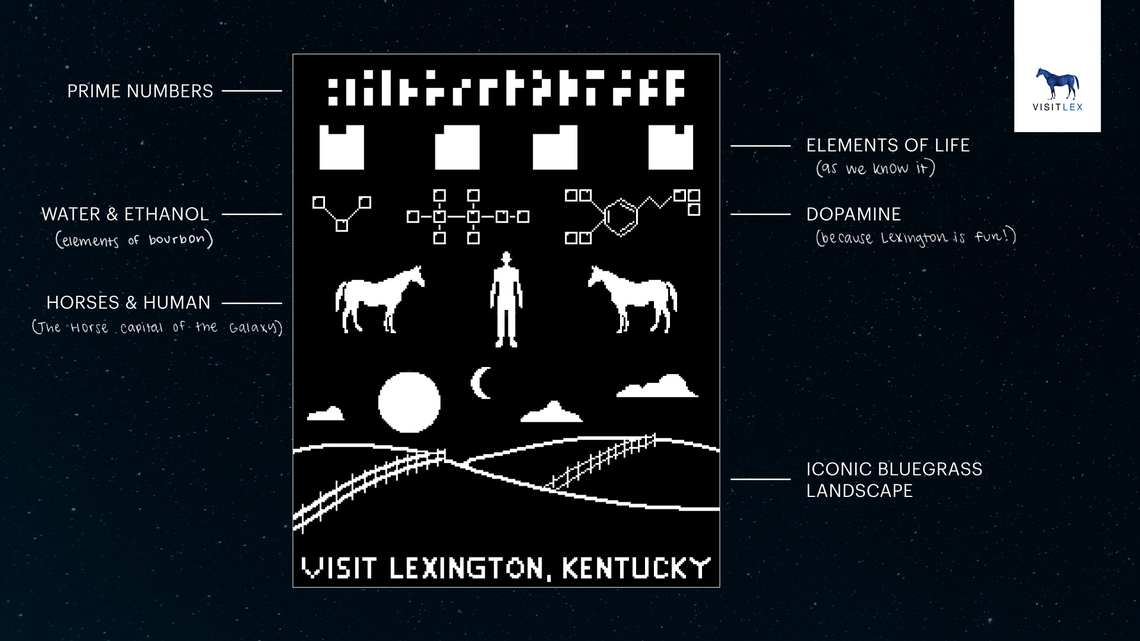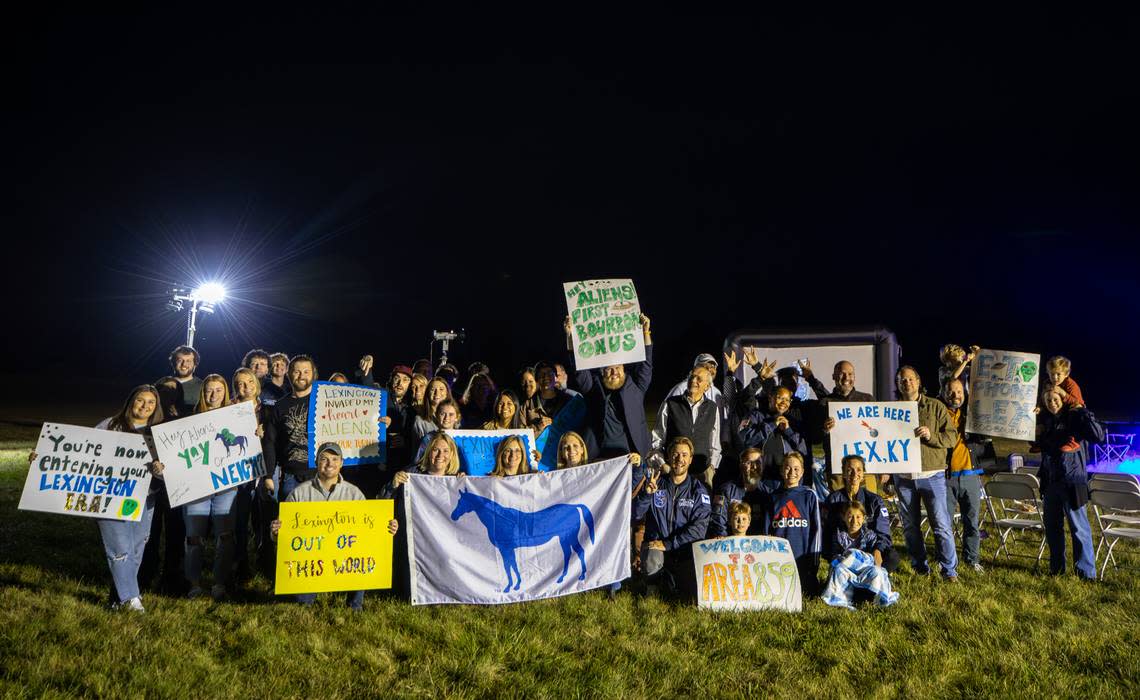Tourism agency to E.T. & other space aliens: ‘Come visit Lexington!’
Hey, E.T.! The Lexington Convention and Visitors Bureau has a message for you: Forget home and come to Lexington instead.
The bureau, also known as VisitLEX, has targeted its newest advertising campaign at aliens in space ... in hopes of reaching earthlings at the same time.
In October, the organization beamed a message into space inviting extraterrestrials to visit Lexington.
“We believe Lexington is the best place on Earth,” VisitLEX President Mary Quinn Ramer said in a news release. “It’s the ideal location for extraterrestrial travelers to begin exploring our world.”
The message, sent via laser, will take 40 years to reach its intended target, the TRAPPIST-1 solar system. That interstellar dot in the universe was chosen because it “is the most studied planetary system outside of our own and is home to the largest number of potentially habitable, Earth-sized planets currently known,” VisitLEX officials said.

Robert Lodder, a UK faculty member, said that when VisitLEX’s advertising agency contacted him last summer with the idea of beaming a message about Lexington into space, he was happy to volunteer his time for the project.
Lodder, who holds appointments in UK’s Department of Electrical and Computer Engineering and Chemistry Department, said he has been has been part of the SETI League, which is searching for extraterrestrial intelligence, for about 20 years.
And for alien-searching rookies out there, SETI is an acronym for Search for Exterrestial Intelligence. The SETI League has operated in LIttle River, New Jersey, since 1994 and boasts 1,500 members in 60 countries on all seven continents, the group’s website boasts.
Lodder said he and a group of fellow UK faculty members with similar interests convened to sharpen the galactic tourism pitch, and VisitLEX provided the laser to send it.
The ad campaign, Lodder said, was not formally connected to the university and did not involve the use of campus resources.
The laser message was sent from the Kentucky Horse Park after approval was received from the FAA.
Lodder said the team that worked on the project reviewed other messages that have been sent in the past and settled on sending “a progression of messages from easy to hard.”
The progression included prime numbers: A bitmap; grayscale images of a landscape with horses, downtown Lexington and bourbon barrels and drinks and an audio recording of a blues guitar riff by Lexington musician Tee Dee Young.
“The bitmap image is the key to it all,” Andrew Byrd, who specializes in linguistics, said in the news release.
“We included imagery representing the elements of life, our iconic Lexington rolling hills, and the molecular structure for water, bourbon, and even dopamine…because Lexington is fun!”
“We were trying to send them something about Earth that was more interesting than what a prime number is or what a periodic table” looks like,” Lodder added.
Maybe, he hopes, Lexington may get a return message. It just won’t be immediate.
Because the TRAPPIST-1 system is about 40 light years away, though, we’ll be waiting at least 80 years to get an RSVP from aliens.

Lexington’s message might not have reached the aliens yet, but the campaign is already generating interest here on Earth. It’s been featured in a number of news articles.
He said the buzz around the congressional hearings on UFOs last summer made it a good time for the city to tap into the public interest in life outside our planet.
Lodder told the Washington Post in an interview this week that “a lot of people think Kentucky is a flyover state, and it’s nice to give them the impression that maybe we’re not. … And that Earth is not a flyover planet.”
